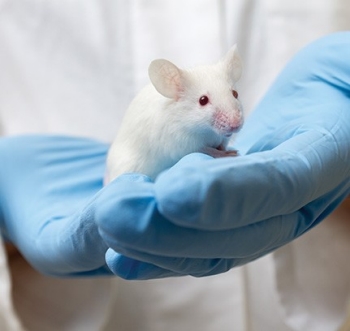The Search for Accuracy

By Kevin Ritchart
The lack of accurate measurement of toxicity levels is one of the chief reasons new drugs can fail. To combat this issue, U.S. scientists have developed a method of testing for toxicity that has not only proven to be faster and more accurate, but also will increase the understanding of existing risks, and may even result in the reduction of dependence on animal testing.
So far, scientists tested 10,000 different chemical compounds in a lab using human cells. The results of this testing were used to construct models to essentially “predict” whether certain compounds – or combinations of them – could be harmful to humans or the environment if they were used in new drugs or environmental chemicals.
The Tox21 Library
The hope is that this new library of toxicity data, created as a result of extensive testing, will help to identify unsafe chemical compounds in things like pesticides, industrial chemicals, food additives and drugs at an earlier stage of the research process. Additionally, traditional toxicity tests using animals can be both expensive and unreliable in accurately predicting a chemical’s impact on humans.
These factors, combined with the ethical concerns associated with animal testing, make this new, combined effort of the Environmental Protection Agency (EPA), the National Institutes of Health (NIH) and the Food and Drug Administration (FDA) – dubbed Tox21 – that much more important.
For Tox21 (short for Toxicology in the 21st Century) to be successful in the long term, the new testing protocol will have to be at least as reliable in predicting the toxicity of chemical compounds as traditional animal testing. At this point, after testing 15 different concentrations of 10,000 chemical compounds (known as the Tox21 10K library), scientists have been able to determine toxicity levels for both humans and animals with increasing accuracy, which makes Tox21 a promising alternative to the current testing regimen.
Since its inception in 2008, Tox21’s aim has been to utilize in vitro (Petri dish) testing rather than in vivo (live) testing of animals. Further examination will have to be done to ensure Tox21’s long-term viability, but at this time it’s unlikely to replace animal testing altogether. Instead, Tox21 will be used to prioritize chemicals with high toxicity levels and earmark them for further testing.
Testing in Action
A recent test was conducted involving estrogen receptors, which are activated by the hormone estrogen and convey signals to the body that regulate reproductive functions. Bisphenol A (BPA), an industrial chemical that’s used to make plastics and is commonly found in water bottles, has been linked to birth defects in infants.
Animal studies suggest that BPA could cause these effects by mimicking estrogen. The Tox21 10K screens helped identify chemical classes that have been known to interact with estrogen receptors as well as some that were not previously known to scientists.
Among the animal-testing protocols the EPA is looking to eliminate is the so-called “6-pack” of tests associated with pesticides. The 6-pack includes three lethal-dose oral, inhalation and dermal toxicity tests in which 50 percent of the animals tested are killed by the test chemical. The Draize eye and skin irritation tests and skin sensitization test comprise the rest of the 6-pack.
The Future
Despite the name, Tox21 doesn’t provide specific information on the toxicity levels of substances. Rather, it shows how chemicals are likely to react when introduced into a complex biological system like the human body. Tox21’s value at this point in time is to help scientists identify substances that might be harmful and outline ways for potentially harmful chemicals to be used safely.
By combining the speed and data collection of high-throughput screening with the interpretive nature of computational biology, researchers can become better equipped to outline which substances are safe to use and which ones are in need of further testing.